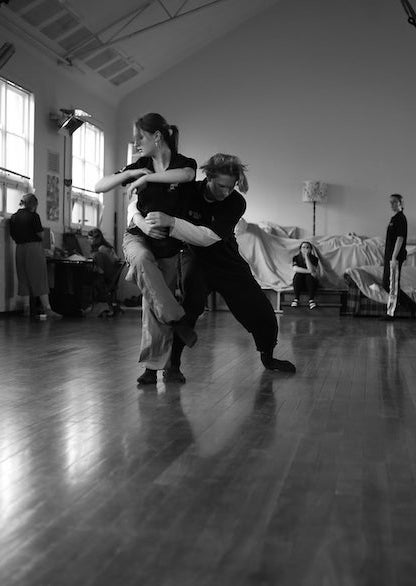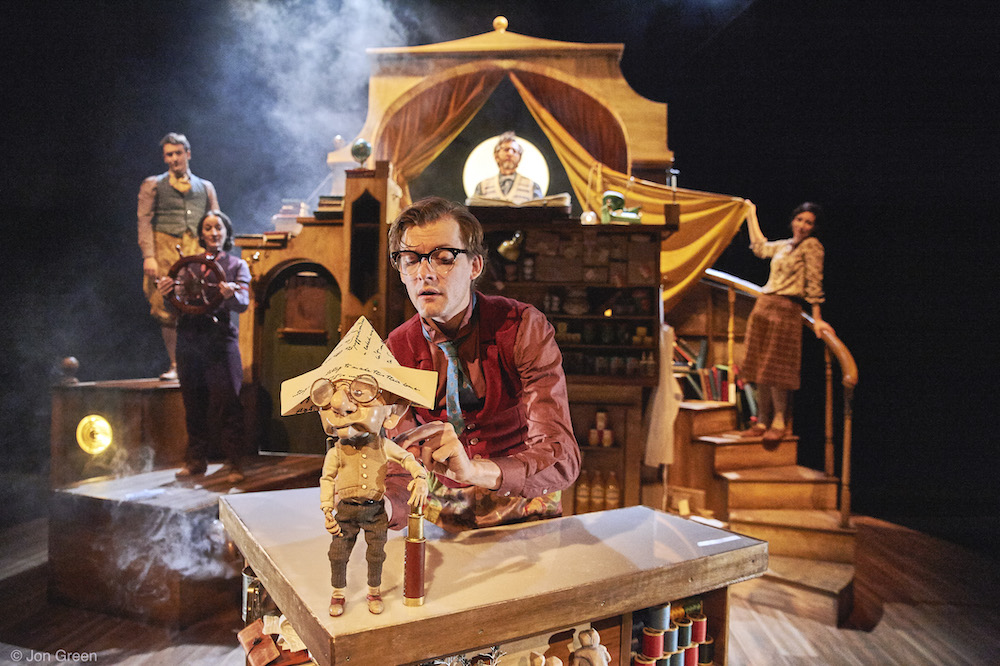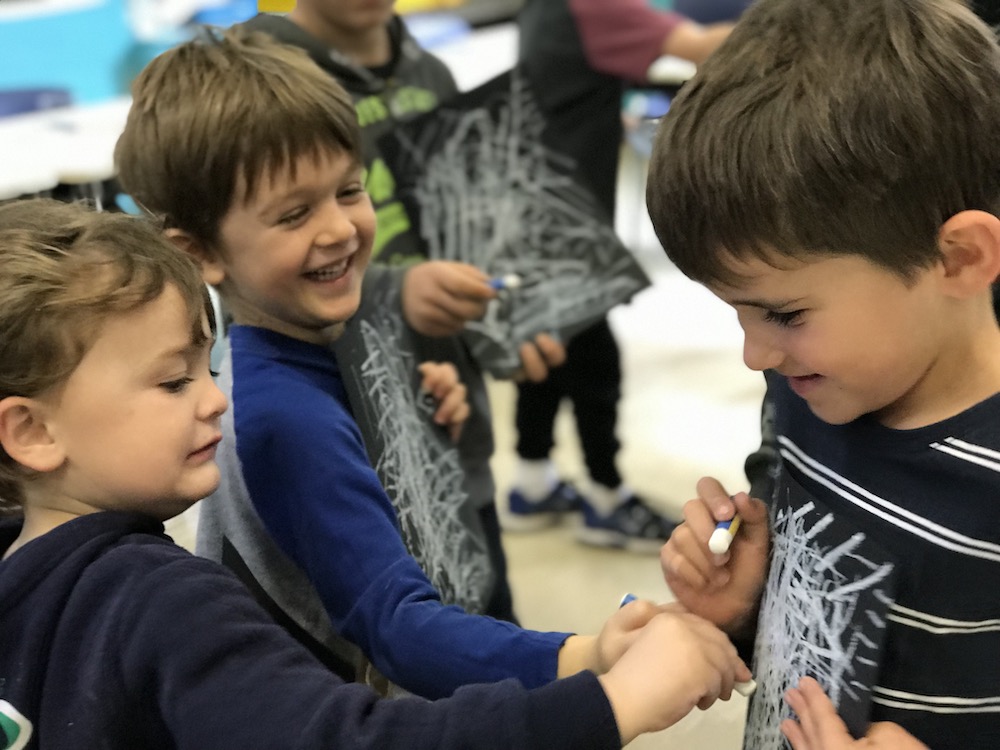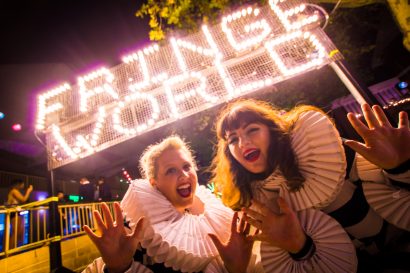Investing public money in youth arts companies and programs should be a no-brainer, writes Nina Levy. Here’s why.
Arts must stay young at heart
29 October 2020
- Reading time • 10 minutesMulti-arts
More like this
- Expressions of Interest | Free arts reviewing mentorships!
- An update from the Board of Seesaw, WA’s Arts Magazine
- Halloween special: How to make blood and other stage tricks
Last month I received an invitation to view a work-in-progress by a group of young independent dance artists. Not so unusual, except that the artists are not yet 18.
Amidst all the usual Year 11 and 12 pressures, these teenagers have successfully applied for funding from Propel Youth Arts WA and created 30 minutes of original and engaging material, entitled The December Project.

They have presented their work-in-progress to a small audience for feedback, prior to a second rehearsal period that will culminate in a public presentation in December. Including these steps as part of the creative process indicates a level of professionalism beyond their years.
These young dancers come from a variety of schools and training backgrounds but the one thing they have in common is that they are members of Co Youth Dance Company. Run under the umbrella of Co3 Contemporary Dance, Western Australia’s state flagship contemporary dance company, Co Youth sees young dancers working with professional dance artists to create and present public performances.
While The December Project is taking place independently of Co Youth, watching the maturity with which the young dancers presented their work-in-progress, it was easy to see the benefits they are gaining from the program.
Co3 Contemporary Dance is one of many companies and organisations that offer WA’s young people the chance to engage with professional artists, whether as participants, audience members or both. Like Co Youth, companies such as WA Youth Theatre Company, WA Youth Orchestra and WA Youth Jazz Orchestra present work performed by young artists, while Barking Gecko Theatre Company, Spare Parts Theatre Company and the Awesome Festival present works created for young people, as well as offering opportunities for children to participate via initiatives such as workshops, courses and artist residencies. And that’s just a selection of what’s on offer in terms of programs and initiatives that engage our young people in the arts.
Nationally, however, investment in children’s arts experiences is diminishing. The only WA youth arts company to be receiving multi-year funding from the Australia Council, Barking Gecko Theatre Company, will no longer be receiving this support from 2022. Two of its Eastern states’ counterparts, Polyglot Theatre and the Australian Theatre for Young People, are in the same position.
READ more about the WA companies that lost their four-year funding for 2021-2024.
This isn’t a new trend. Until 2015 the Australia Council’s Youth Program Fund ensured that money was set aside for companies making work with and/or for young people, but this program was disbanded five years ago. In 2007 there were 21 not-for-profit youth arts organisations receiving operations funding from the Australian Council. In 2022 there will be seven.
Navigating our changing world
Why should public money to be invested in arts experiences for young people?
As Lilly Blue, artist and Learning and Creativity Research Manager at the Art Gallery of Western Australia explains, working alongside professional artists prepares young people for the demands of contemporary life.
“The kind of skills and practices that artists develop in the studio – improvisation practices, embodiment practices, heightened focus and attention, the ability to respond, the ability to pivot, a poetic understanding, the ability to hold paradox and ambiguity – are the kind of skills that we know are profoundly important for navigating any field; the world as we know it now, and the world coming that we don’t know that much about,” she observes.
Right now, the thought of “the world coming” can be daunting, whatever your age. But, as Luke Kerridge, Artistic Director of Barking Gecko Theatre Company, points out, bringing young people into the theatre can help.
“How do you live with uncertainty? … The tool you will need is imagination; you will need to know how to how to reimagine the world, how to think of different ways of living,” he remarks.
“And where do children get to practice that in their lives? The theatre. It asks you to lean in. It asks you to connect your imagination up with all the other minds in the in the space and do it in real time. Fill in gaps go on a journey, let those actors sweep you away.”

Kerridge’s observations are backed by research. A study conducted by New York’s New Victory Theatre found that children who attend live theatre are better able to “imagine the lives of others” and have a more optimistic attitude towards the future than those who don’t attend live theatre. As a 2019 report on this study by the National Endowment for the Arts (US) notes, “Speaking metaphorically, young people discover and develop hope through the performing arts.”
“… young people discover and develop hope through the performing arts.”
Creative risk taking
Arts programs can also provide a safe opportunity for taking the risks that so many adolescents crave. Dr Shona Erskine, a psychologist specialising in performing arts, explains:
“Young people have to take risks as part of their development – if they don’t there are going to be issues. But we don’t want them to take maladaptive risks, like getting into V8, with a P-plater who’s got a blood alcohol level, for example. The risk of rehearsing for something and then putting it out there in front of people? That’s a risk… but it’s an adaptive risk.”
Two-way benefits
“Creativity is a natural language for children and so it makes sense that children are in dialogue with artists, who also know that language,” observes Kerridge.
That dialogue between child and adult artists is mutually beneficial, notes Blue, referencing a project she has worked on as co-editor of BIG Kids Magazine, called the Child-Artist Response Project, in which artists and children respond to one another’s work. “The unexpected thing we learned in that project was how impacting it was for artists, to engage in discourse and conversation with children or respond to their artwork in ways that developed their own studio practice,” she notes. “I find the opportunity to improvise, to harness disruption, to respond in an unpredictable environment – which is often the case when children are unbridled – impacts my own practice.”

Arts as the great equaliser
The idea that creativity is a language spoken by all children is backed by science, says Erskine.
“Research shows that any child of any socio-economic background, of any cultural background, of any nationality, has equal capacity to engage creatively in the world. So it’s one of these great equalisers, and also one of the reasons why creative practice is so essential for all young people.”
That’s why it’s so important that youth-focused arts companies are funded, she continues, because it enables them to run programs that are affordable and accessible to a broader range of children.
Return on investment
Research also suggests that children who attend live arts performances are more likely to become adult attendees than those who don’t. Market research conducted in New York City found that 78% of adults who attended theatre regularly had seen their first show by the time they finished primary school, according to the aforementioned report by the National Endowment for the Arts.
That means funding arts for young people has massive potential to pay off when those children become adults and start buying tickets to shows. Given that the arts accounted for 6.4% of Australia’s GDP – more than $111.7 billion – in 2016/17, the return on investment in growing audiences could be considerable.
Life skills, mental resilience and a fiscal return on investment. Funding arts for young people should be a no-brainer.
Pictured top are children watching Barking Gecko Theatre Company’s 2019 production ‘A Ghost in my Suitcase’
Looking for an experience to share with the young people in your life?
The Art Gallery of WA runs various ongoing programs for young people, including Conversations with Rain, AGWA Gently and Drawing Breath.
Like what you're reading? Support Seesaw.







